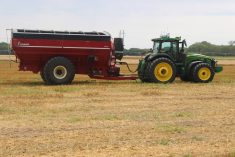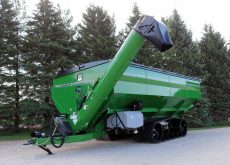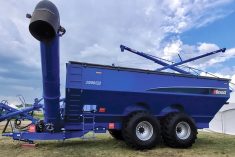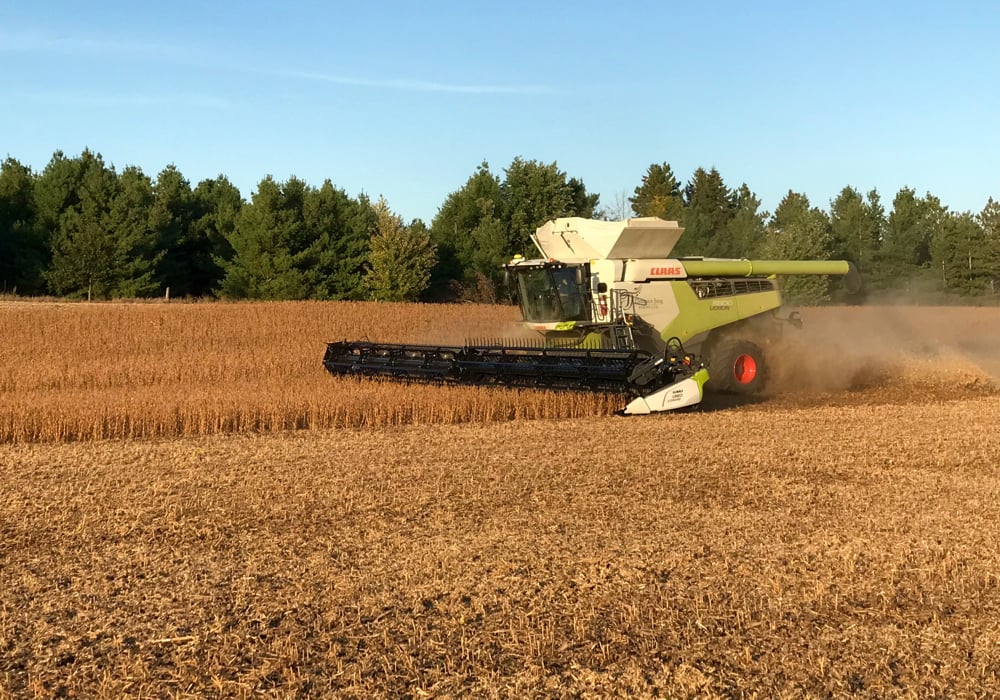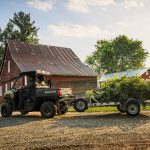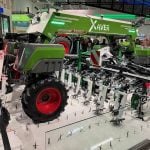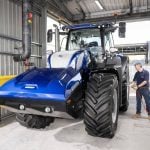Some pretty interesting machines have been built in farm workshops over the years.
The odd one is marketed commercially, but most simply meet a need on the farm.
For Mike Belan and his family’s farming operation near Sarnia, Ont., the workshop creation, dubbed the ‘Combuggy’, has been helping grain handling operations run smoothly since 2000.
Read Also
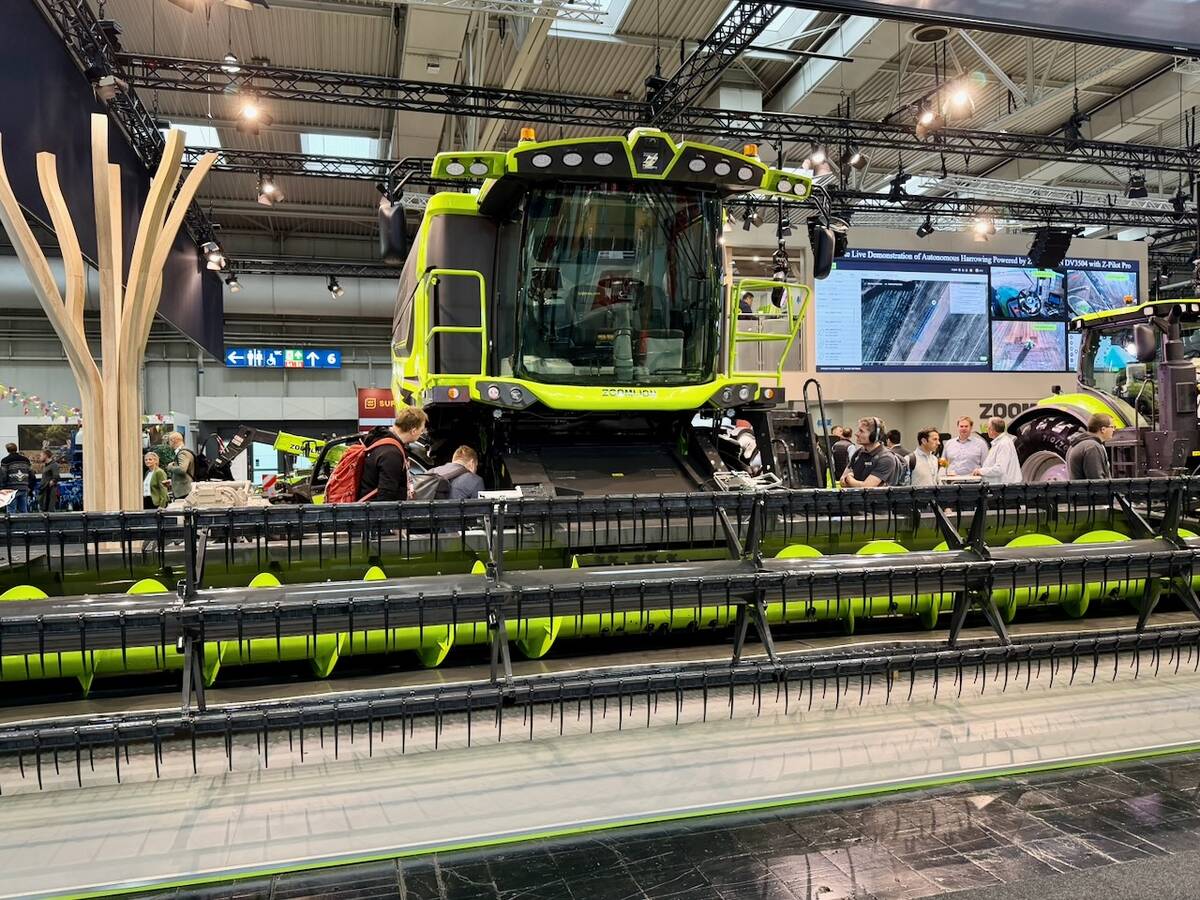
Agritechnica 2025: Day 3
Zoomlion’s diesel-electric hybrid combine drives draws interest, data standards look to keep up to technology change and tractors of the year are named at German farm show Agritechnica 2025.
The Combuggy is the name the family gave to a John Deere 8820 combine that was merged with a Brent grain cart.
“We did a lot of custom work with 8820s,” said Belan. “We eventually had four and we were looking for another. We found this one was burnt, so we bought it for parts. Then we got the brainwave to strip it for parts for the other 8820s and convert it to what we call the Combuggy. The hopper is a Brent grain buggy.
“It was mostly my uncle and myself (that built it). It was kind of a wintertime shop project.”
The final design was the result of scrounging through an assortment of components lying around the yard.
“A lot of the pieces were – how should I put it – designed by inventory,” Belan added. “We made what we had work. My uncle is always fabbing up stuff in the shop, so we had a lot of the stuff.”
With the grain cart on its chassis, the 8820 had about 500 bushels of carrying capacity. That much weight required the structure to be reinforced.
“Basically, we got big I-beams between the front and rear axles. We did have to beef it up. We put bigger tires on the back.
“At the time it didn’t have four-wheel drive, so we added the rear-wheel assist. We found with the heavy load that the hydrostatic system needed that extra push, especially when it’s filled right up. There’s lots of power there, but for the hydrostatic, that’s pretty much all it can do.”
Initially, the Combuggy was built to be a self-propelled cart to carry grain from combines to the trucks. But it didn’t work as well for that job as expected.
“The intention was to use it in the field as a second grain buggy, because we had three 8820s and we would dump on the go,” Belan said.
“But it was just cumbersome for that job. It’s cumbersome to see your blind spots, basically. It can be done once you get the hang of it and how far over you have to be. It’s not ideal like a tractor and grain buggy is.
“But what we liked about it was the hydrostatic transmission, just a simple forward or back. And you can quick fill and quick unload it.”
Eventually the Belans found it worked best as a mobile storage bin in the field that the other cart could dump into, which made the regular grain cart more efficient.
“We just leave it in a position and the transport can back underneath it and the transport guy can run it by himself,” said Belan.
“We use it as a spot to dump our main grain buggy after going to pick up in the field. We’ll come to the front of the field, dump into it as a holding reservoir until a truck gets back. Whenever we’re waiting on a truck, there’s another 500 bushels. So, we can load a truck real quick.”






